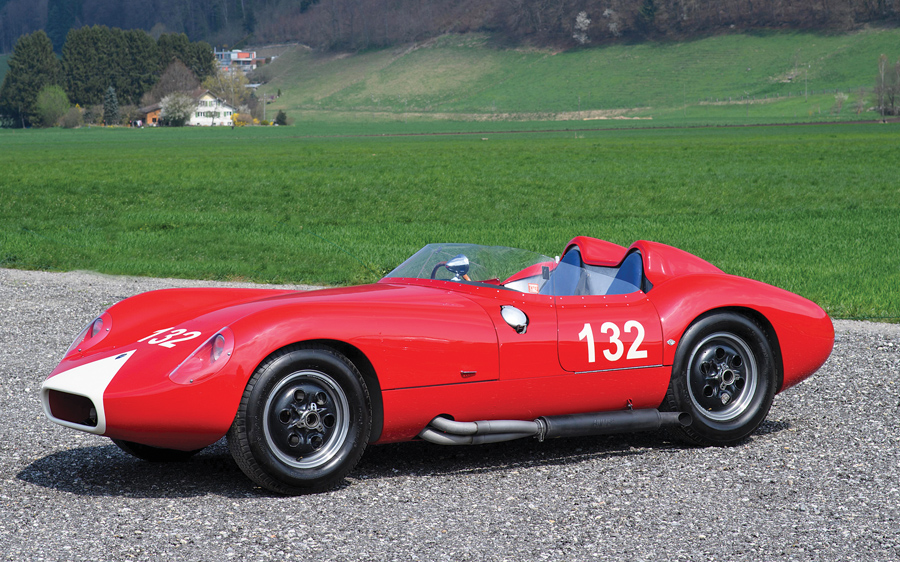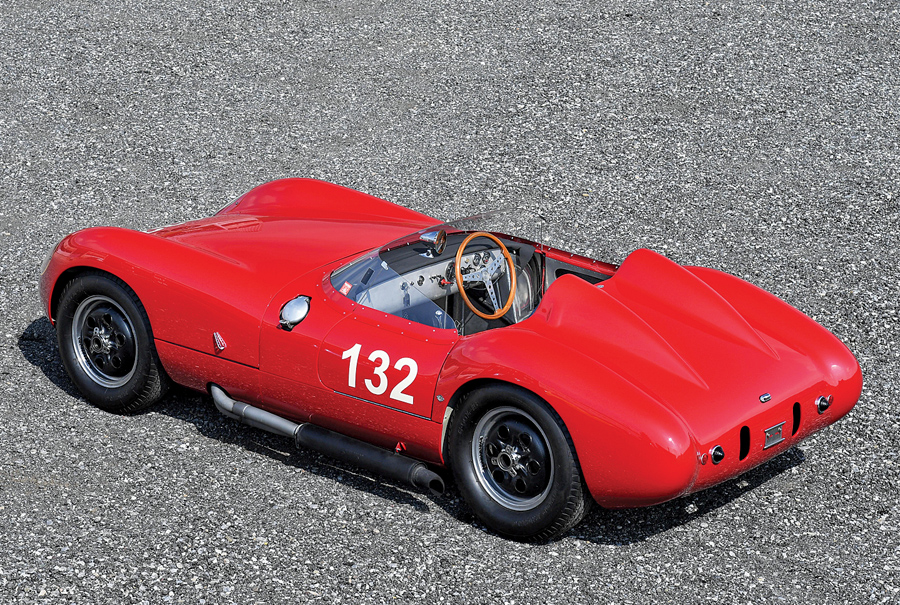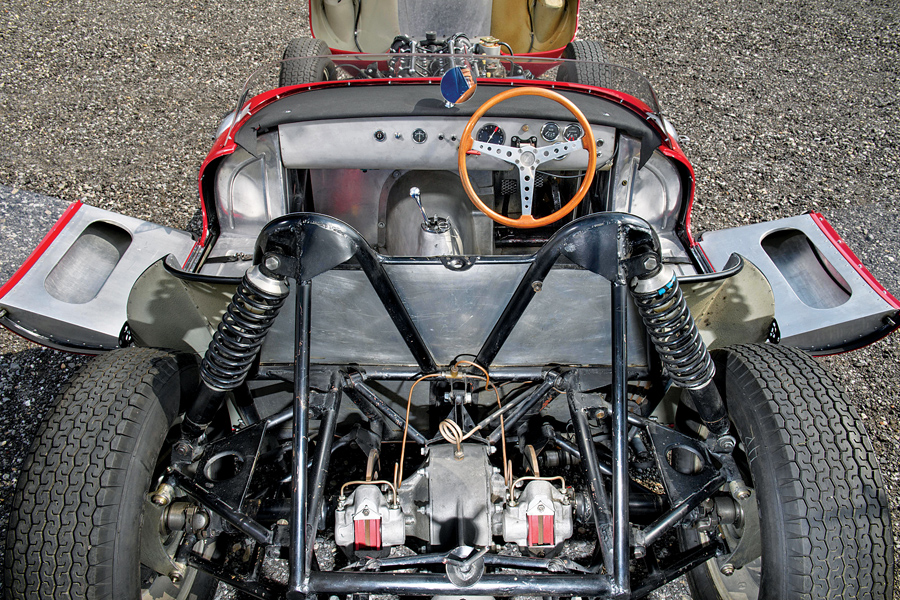SCM Analysis
Detailing
| Vehicle: | 1959 W.R.E.-Maserati |
| Years Produced: | 1959 |
| Number Produced: | Three |
| Original List Price: | $10,000 |
| SCM Valuation: | $819,000 (this car) |
| Chassis Number Location: | Unknown |
| Engine Number Location: | On head between cams |
| Alternatives: | 1956–58 Maserati 200 S, 1958–60 Lotus 15, 1956–57 Ferrari 500 TR/TRC |
| Investment Grade: | B |
This car, Lot 158, sold for $815,069, including buyer’s premium, at RM Sotheby’s Villa Erba auction in Italy on May 27, 2017.
In the pantheon of performance European collector cars, there are few categories as sought after as Italian sports racing cars from the late 1950s.
Somehow these cars managed to achieve a sweet spot in virtually all of the trade-offs that are inevitable when in-the-day racing prowess and importance are set against modern-day collector expectations. Early 1950s through mid-1950s racing Ferraris, for example, were very successful and important cars, but were ergonomically terrible (unless you were a 110-pound, 5-foot, 8-inch Italian weightlifter) and, candidly, not very much fun to drive.
The frames were flexible, the suspension primitive, the brakes and steering were heavy and mediocre at best. They were hot, noisy and wildly unsafe if things went wrong. They are revered and sought after when they come to market, but they are seldom used. Modern collectors don’t want to put up with the difficulties of driving them. Also, the aesthetics of those cars tended more toward brutal than to beautiful, so falling in love with how they look is strictly subjective.
The British and Germans led a sea change in racing-car design during the mid-1950s.
Keeping the tires on the road
The Italians saw racing cars as evolving directly from the pre-war designs, and they treasured horsepower above anything. In contrast, the English had tons of under-utilized aircraft design and construction talent. The Germans, who had to start from nothing, looked at the challenge from a more technical point of view.
The British and Germans realized that a stiff, light chassis (triangulated small tubes or folded-sheet-metal monocoque) and suspension designs that allowed for greatly reduced unsprung weight would allow much softer springing and shock-absorber settings. This meant that racing cars could be much more pleasant to drive — and far faster because the tires actually stayed on the road.
Racing is by definition ultimately competitive, so within a few years everyone followed along, and racing cars became far more enjoyable to drive.
Engine technology developed more slowly but along a similar path. Lighter engines making more horsepower were developed, but they remained approachable for ordinary mortals who wanted to use them.
“Exotic” still meant twin overhead cams and Weber carburetors, redlines were seldom over 7,500 rpm, and usable torque was available from 3,500 rpm or so.
Tire design remained unchanged from the early 1950s through 1963, so every tire was tall, skinny, and hard, with big slip angles. They were easy to drive at the limit. Aerodynamic philosophy in the era was “if it is beautiful, smooth, and swoopy, it must be fast,” so the body designs tended to be heartthrobs.
A golden age of racing sports cars
All of this combined to create a halcyon period in racing cars, when they were gorgeous and fun to drive, while still tractable to use on the open road. You started them by pouring in fuel and pushing the starter button. The cars were plenty fast without requiring a professional racer’s abilities to stay out of the hospital.
Cars in this category tend to be tremendously expensive, which is understandable considering their desirability and relative scarcity.
That said, there is a split between the factory world-championship-contending cars (generally 3 liters and above) and the customer-oriented smaller class racers, which tend to be under 2.5 liters. The “big” sports racers are now expensive enough to be unobtainable (the exception being Jaguar D-types at a bit over $4.5 million), which is a little bit crazy.
The under-2.5-liter cars are simply eye-wateringly valuable.
Maserati’s 200S and Ferrari 500 Mondial and TRs are under $4 million, for example. England’s giant killers, Lotus 15 and Tojiero, are worth much less, but they’re not Italian.
The short, happy life of W.R.E.
So what would one of those Italian racers actually be worth if it didn’t have a Prancing Horse or Trident badge on the nose?
Our subject car is a perfect chance to find out, as the W.R.E. has literally everything the “name” cars do — and more — but without the brand recognition.
World Racing Enterprises was a short-lived, quixotic effort to compete against the likes of Maserati. American racer Tony Settember started W.R.E. and recruited English designer John Wadsworth to create the ultimate late-1950s Italian sports racer.
The chassis was a lightweight, stiff, tubular design with independent rear suspension and disc brakes (inboard in back).
The body was aluminum and looked a lot like a Maserati. It used a Maserati 200S engine, and the whole thing was built in Modena. How much more Italian can you get?
The finished car was about 200 pounds lighter than a 200S, and it was a far more sophisticated design. The first car walked away from the competition and though not cheap — about the same price as a new Maserati — immediately garnered two orders from defeated drivers.
The problem was that by the time those two cars were completed, the racing world had moved on.
On the front-engined side, Maserati introduced the Tipo 60 “Birdcage,” and Lotus 15s were showing their speed. Cooper’s Monaco and Porsche’s RS 60 were ushering in the mid-engined revolution and making everyone’s life difficult.
W.R.E. cars quickly stopped being competitive, and the company didn’t have the funding to develop anything else, so the three cars are all that ever happened. Now, they’re a footnote in the development of the racing car.
What’s a nose badge worth?
Our subject car is chassis 02, the first of the two customer cars and slightly different than the original in that it made adjustments to meet FIA Group C regulations (spare tire and luggage space).
It was raced successfully in the era and reportedly has FIA paperwork attesting to its technical acceptability for international racing.
The new owner would be welcome anywhere as a participant in the prestigious pre-1960 sports racing grids, and — with a good driver — could expect to do well. This car ticks all the boxes for a serious Italian racing car except one — it doesn’t have a famous manufacturer.
So what is the nose badge worth? It looks to me like the market is telling us at least 2 million bucks, maybe a little more, as a percentage somewhere between 200% and 250%.
Is it worth it? I really don’t know.
Using the “cheapest good house in a great neighborhood” approach, this would appear to be a fabulous buy — except you could buy a Lotus 15, an advanced, tube-frame, aluminum-bodied racer from Lotus that is beautiful and every bit as fast, for roughly half of our subject car’s price.
But the Lotus isn’t Italian, which in the collector world means a lot. I can’t afford any of them, but if I could, I would have bought this W.R.E. in a heartbeat. I’d say very well bought. ♦
(Introductory description courtesy of RM Sotheby’s.)


